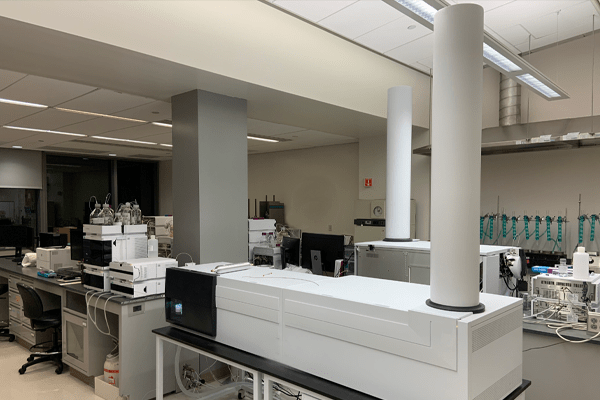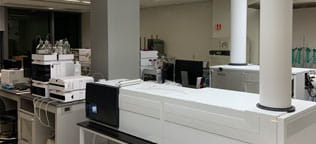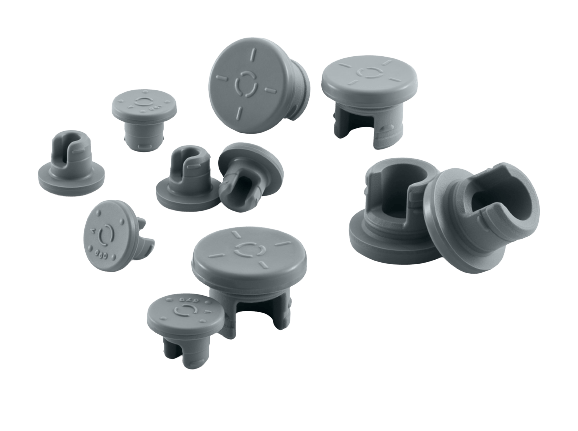Extractables and Leachables – A Roadmap
In view of patient safety and product quality, extractables and leachables assessments of pharmaceutical packaging and delivery systems have become an integral part of both development and regulatory submissions. Two crucial USP guidance chapters, USP <1663> “Assessment of Extractables Associated with Pharmaceutical Packaging/Delivery Systems” and USP <1664> “Assessment of Drug Product Leachables Associated with Pharmaceutical Packaging/Delivery Systems” have been published to guide pharmaceutical companies on the practical and technical considerations required for extractables and leachables assessment programs.
![]()

The starting point for an assessment program involves gathering extractable information from each packaging and delivery component. This is so potential target compounds of concern can be monitored as leachables and their impact on drug quality and safety can be evaluated. According to USP <1663>:
Since the pharmaceutical packaging/delivery system is the primary source of potential leachables, it is generally appropriate that any leachables assessment be preceded by an extractables assessment performed on the packaging/delivery system, its primary and certain critical secondary packaging components that are non-contacting but potentially interacting, and/or packaging and delivery system materials of construction; consistent with regulatory guidelines and best-practice recommendations.
A proper way to approach this is by having an Extractables and Leachables Roadmap or a document that will provide users guidance during each step of the process. The steps of such a Roadmap involve:
- Gathering of Information. What is known about the material of each component should be assembled. Sources for such information include vendor data, literature searches, and existing information obtained from previous experiences. West has several extractables documents available for different elastomer formulations. These aid customers in deciding on the appropriate component and deciding what testing should be conducted for the extractables study. These documents comprise:
- Theoretical Material Extractable List. This reports the potential organic compounds and inorganic elements/compounds based on materials used in the formulation.
- Extractable Elements Data Sheet. This reports the concentration of targeted inorganic elements extracted for each formulation.
- Nitrosamine Data Sheet. This reports the concentration of targeted nitrosamines extracted for each formulation.
- Material Characterization. This reports the organic compounds and inorganic elements/compounds extracted for each formulation. Data is based on a single solvent extraction per analytical technique. The analytical techniques are liquid chromatography mass spectrometry (LCMS), gas chromatography mass spectrometry (GCMS), ion chromatography, and inductively coupled plasma optical emission spectroscopy (ICP-OES).
- Extractables Package. This reports the organic compounds and inorganic elements/compounds extracted for the AccelTRA® 4031/45 Gray formulation. Data is based on multiple solvents per analytical technique. In order to extract a more comprehensive range of elements/compounds, solvents comprise those of different pH and different polarities. As with a Material Characterization, multiple analytical techniques are used for detection of both organic and inorganic compounds.
- VeriSure® Package. This document reports the organic compounds and inorganic elements/compounds extracted for the 4432/50 Gray and 4023/50 Gray formulations. Data is based on multiple solvents per multiple analytical techniques. This is the most extensive extractable package available. Multiple solvents with different pH and polarities used. Moreover, components with various configurations, from various lots, from various manufacturing sites, and with various processing/sterilization conditions are examined. From the vast amount of information available, an extractable baseline list is established.
- Gap Analysis and Evaluation. The extractables information obtained is evaluated to decide if it is sufficient for a proper risk assessment. If additional information is needed, fit-for-purpose extractables studies, that include appropriate extraction solvents, conditions, and analysis techniques, are designed. Further, a simulation study that uses the actual drug product, or a highly similar matrix, can be conducted to identify extraneous compounds. Some of the considerations for a simulation study include the type of storage conditions employed, whether it is an accelerated or real-time study, and if different lots are required. While the identity of extractables usually can be confirmed with a common unit mass spectrometer, such precision usually is not sufficient when the compound is not found in a database. Such compounds are difficult to identify by a molecular weight value if reported only in whole numbers, as many different molecular formulas have the same value. To address this issue and most accurately identify extracted unknown compounds, high resolution mass spectrometry is needed. West Analytical Laboratory Services has available quadrupole time of flight (QTOF) mass spectrometry instrumentation that is able to provide molecular weight values up to four decimal places. This enables higher accuracy and faster speed in identifying unknown compounds. This information is crucial; knowing identity enables evaluation of potential toxicity and whether these compounds should be targets of the subsequent leachables study.
- Risk Assessment. Once all extractable data have been obtained, a toxicological assessment is performed to identify the compounds that will be analyzed as leachables in the drug product.
- Leachables Assessment. The extractables assessment is mainly a qualitative to semi-quantitative screening analysis; in contrast the leachables assessment is a quantitative targeted analysis. This assessment involves quantitative methods that are validated for the drug product and optimized for the detection of the identified leachables. Leachable screening methods should be considered for the evaluation/determination of unexpected leachables. In addition to real-time assessment, leachables assessments may include accelerated storage conditions. Another important aspect of a leachables assessment is consideration of the analytical evaluation threshold (AET). This is the threshold at or above which a leachable would need to be characterized for toxicological assessment, as this may compromise patient safety or drug product quality. In order to Simplify the Journey™ for customers, West has the appropriate licenses and capabilities for small-scale formulation of drug products needed to perform these assessments. Degradation studies of drug products also can be performed at West. This is crucial to ensure that degraded drug product will not form interferences that may mask leachables.
While the entire extractables and leachables program may seem to be a long journey for drug developers, West is equipped with the appropriate experience and instrumentation to help move products swiftly through the regulatory submission into market. For more on how West can help, contact a Technical Customer Service (TCS) representative or Account Manager.
AccelTRA
® and VeriSure
® are registered trademarks of West Pharmaceutical Services, Inc., in the United States and other jurisdictions.










